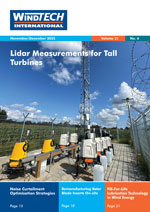The report Efficient integration of mixed connection concepts for offshore wind and hydrogen production, written by Frontier Economics for Aqua Ventus, assesses how combining offshore wind connections with hydrogen production and pipeline transport could help lower the cost of integrating future wind capacity in the German North Sea. Germany’s statutory 70 GW offshore wind target for 2045 is analysed, alongside a more conservative 55 GW scenario.
Current projections show rising expenditure for offshore electricity transmission, and recent planning documents anticipate high investment needs for both offshore and onshore grids. In this context, the Federal Maritime and Hydrographic Agency has sought feedback on allowing higher turbine capacity relative to cable capacity, or overplanting, in far-offshore zones 4 and 5.
The report evaluates three approaches: a baseline with matched turbine and cable capacity and onshore electrolysis; electricity-only overplanting; and offshore sector coupling, which combines excess turbine capacity with offshore electrolysers and a hydrogen pipeline. An optimisation model identifies the most cost-effective infrastructure mix for zones 4 and 5.
Offshore sector coupling delivers the largest estimated annual savings: up to €1.7 billion in the 70 GW scenario and €477 million in the 55 GW scenario. Electricity-only overplanting also reduces costs relative to the baseline, but to a smaller extent.
The advantage of sector coupling stems from more efficient transport and more flexible use of offshore generation. Hydrogen pipelines lower overall transport costs, while the ability to produce electricity or hydrogen increases grid utilisation and reduces curtailment.
Sensitivity tests show the findings hold across variations in electrolyser capacity, electricity prices and offshore electrolyser costs.
The report notes that regulatory changes will be needed to enable offshore sector coupling, including wider site designations for offshore electrolysis, coordinated planning of power and hydrogen transmission, equal treatment of offshore and onshore electrolysers, and measures to reduce investment risk.










